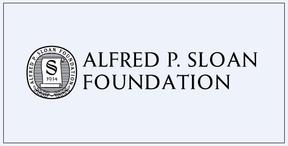 Well we’ve just wrapped of the first (of three) annual conferences on the Microbiology of the Built Environment here in Boulder. I thought the meeting went really well, a big thanks again to the organizers Mark Hernandez and Alina Handorean.
Well we’ve just wrapped of the first (of three) annual conferences on the Microbiology of the Built Environment here in Boulder. I thought the meeting went really well, a big thanks again to the organizers Mark Hernandez and Alina Handorean.
There were a lot of tweets during the meeting which we’ll collect using Storify and post here on microBEnet. There were also videos taken of a number of the talks and we’ll look into getting those accessible for people. As always, we encourage people to post their talks to Slideshare and allow them to be seen by a much wider community. We have instructions for doing that here. If you do that, please drop us a line and we’ll collect them on a page somewhere.
One of the interesting things about this conference was that it wasn’t all about science, there were a lot of (mediated and unmediated) discussions about the future of the field, whether it was a field at all, where funding might come from, how to bridge the gap between different groups of researchers, how to create a common language, etc. etc. A number of great ideas were tossed around and the discussions seemed very fruitful.
Rather than summarize the whole meeting, I thought I’d just post a list of random things I learned that I thought were particularly cool or interesting. Feel free to add similar thoughts in the comments below.
Rich Corsi explained that the temperate in a single house can vary from 18C in the basement to 50C in that attic at the same time. This is a critical point for taking temperature measurements in the built environment.
Bill Bahnfleth Banflefth had some really interesting numbers showing that the “costs” of unhealthy indoor air in a building can greatly exceed the energy savings obtained by sealing it up. Likewise he talked about the productivity benefits of improved air quality, and again how those are more important than energy savings even thought energy savings is the main focus of a lot of designers/regulators.
Several talks showed that geography is more important to the makeup of microbial communities than local variation. Likewise a couple of talks really hammered home how important the season is when observing microbial communities.
Denina Hospodsky showed that as particle size goes up, fungal allergens increase and as particle size goes down, pathogen concentration increases. Doesn’t look like there’s a “good” particle size.
Keith Seifert showed that in his experiments they could of course see things by pyrosequencing that they couldn’t culture, but that the reverse was also true.
———————–
UPDATE February 2019
Storify is no longer in existence. Fortunately we were able to convert the Storify summary to one via Wakelet.
Wakelet details:
- Link to Wakelet Site: Sloan Meeting on microbiology of the built environment #microBEnet
- PDF of Wakelet
———————–